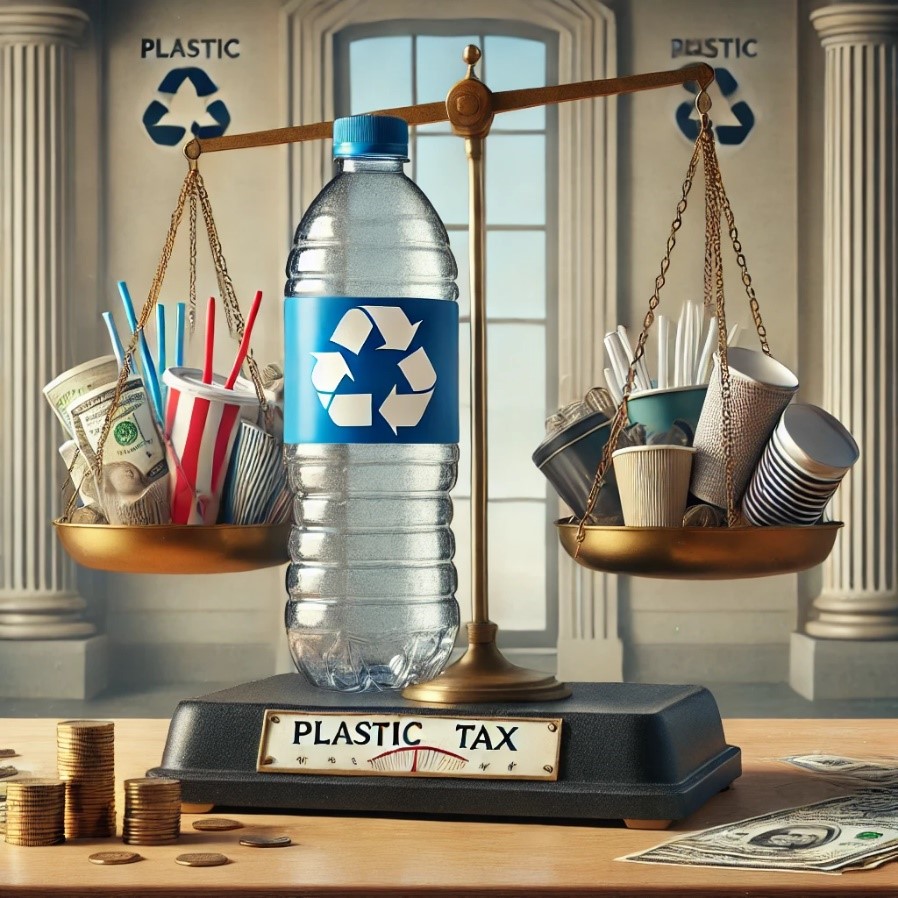
Revolutionary Initiatives: Plastic Tax and DRS help fight Plastic Pollution
Taxing plastic bottles and implementing deposit return schemes (DRS) are effective strategies in reducing plastic pollution. These initiatives encourage recycling, reduce littering, and promote more sustainable consumption patterns. Here’s how they work and some examples of their global impact:
1. Plastic Bottle Tax
A tax on plastic bottles increases the cost of single-use plastics, incentivizing both manufacturers and consumers to consider alternatives. The extra cost typically drives consumers to reduce their use of plastic bottles, opting for reusable alternatives instead.
- Case Study: Ireland
• Plastic Bag Levy: Although not specifically on bottles, Ireland’s plastic bag tax introduced in 2002 led to a 90% reduction in plastic bag use within weeks. This success has inspired similar measures for other single-use plastics, including bottles.
• Impact: The levy has helped to significantly decrease litter and promote environmental awareness.
• Implementation: Retailers pay the levy to Revenue, who then pays it into the Circular Economy Fund. Retailers must charge the levy to customers and itemize it on any invoice, till receipt, or docket. The current levy is €0.22 per plastic bag.
- Case Study: The UK
• Plastic Packaging Tax (2022): The UK introduced a tax on plastic packaging that does not contain at least 30% recycled content. Though it targets packaging broadly, it directly affects bottled products.
• Impact: Early reports indicate that companies are increasingly using recycled materials to avoid the tax, contributing to reduced virgin plastic production.
• Implementation: Businesses that qualify for the tax must pay £200 per metric tonne of plastic used in the packaging.
2. Deposit Return Schemes (DRS)
DRS involves consumers paying a small deposit when purchasing a beverage in a plastic bottle, which is refunded when the empty bottle is returned. This system incentivizes recycling and significantly reduces littering.
- Case Study: Germany
• DRS Implementation: Germany’s DRS, introduced in 2003, covers most plastic bottles and cans.
• Impact: The country boasts a return rate of over 98%, with most bottles being recycled. This has drastically reduced litter and improved recycling efficiency.
- Case Study: Norway
• DRS Implementation: Norway has one of the most successful DRS, with a return rate of 97% for plastic bottles.
• Impact: The scheme has helped Norway achieve one of the lowest levels of plastic waste in Europe, with recycled materials being used to produce new bottles, reducing the need for virgin plastics.
- Case Study: Lithuania
• DRS Implementation (2016): Lithuania introduced a DRS to combat its low recycling rates.
• Impact: Within the first year, the country’s bottle return rate soared from 34% to 74%, reaching 91% by 2017. This rapid improvement showcases the effectiveness of DRS in improving recycling behaviors.
3. Planned Implementations and Positive Outlooks
Several countries have announced plans to implement these schemes, observing the success in nations like Germany and Norway.
- Scotland: Scotland introduced a DRS in August 2023, aiming to replicate the success seen in other European countries.
- Australia: Various states in Australia have implemented or are planning DRS, with positive early outcomes in regions like New South Wales, where the scheme reduced litter by 40% within a year of its introduction.
Global Impact
- Waste Reduction: Countries with DRS consistently report reduced plastic waste and littering. The higher return rates translate into significant reductions in the amount of plastic ending up in landfills or oceans.
- Increased Recycling: Both taxes and DRS incentivize recycling, increasing the demand for recycled materials and supporting a circular economy.
- Behavioral Change: These measures foster environmental responsibility among consumers, encouraging them to opt for reusable products and dispose of plastics responsibly.
As more nations adopt these strategies, their cumulative impact could play a crucial role in mitigating the global plastic pollution crisis.







